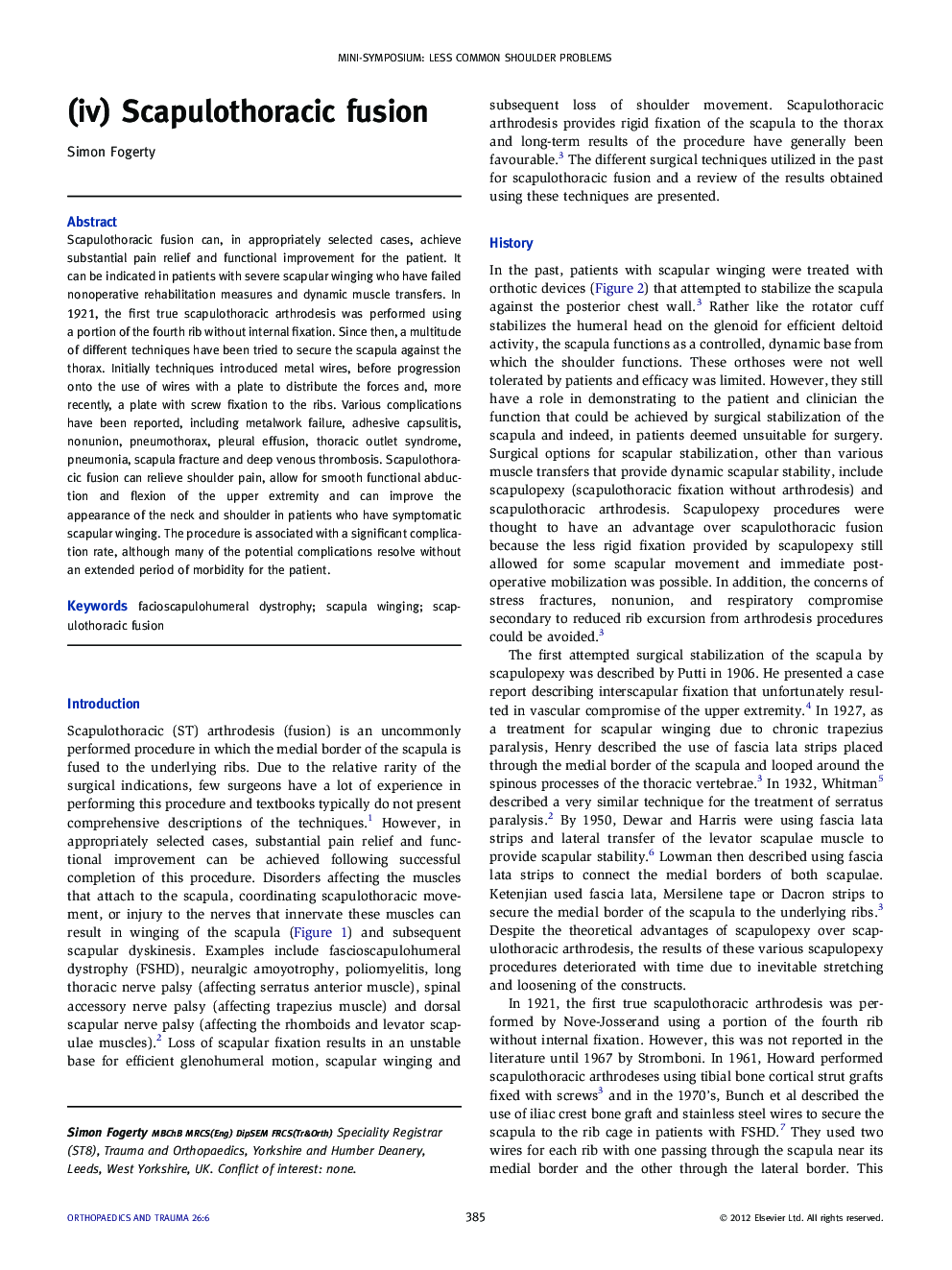| Article ID | Journal | Published Year | Pages | File Type |
|---|---|---|---|---|
| 4080476 | Orthopaedics and Trauma | 2012 | 6 Pages |
Scapulothoracic fusion can, in appropriately selected cases, achieve substantial pain relief and functional improvement for the patient. It can be indicated in patients with severe scapular winging who have failed nonoperative rehabilitation measures and dynamic muscle transfers. In 1921, the first true scapulothoracic arthrodesis was performed using a portion of the fourth rib without internal fixation. Since then, a multitude of different techniques have been tried to secure the scapula against the thorax. Initially techniques introduced metal wires, before progression onto the use of wires with a plate to distribute the forces and, more recently, a plate with screw fixation to the ribs. Various complications have been reported, including metalwork failure, adhesive capsulitis, nonunion, pneumothorax, pleural effusion, thoracic outlet syndrome, pneumonia, scapula fracture and deep venous thrombosis. Scapulothoracic fusion can relieve shoulder pain, allow for smooth functional abduction and flexion of the upper extremity and can improve the appearance of the neck and shoulder in patients who have symptomatic scapular winging. The procedure is associated with a significant complication rate, although many of the potential complications resolve without an extended period of morbidity for the patient.
